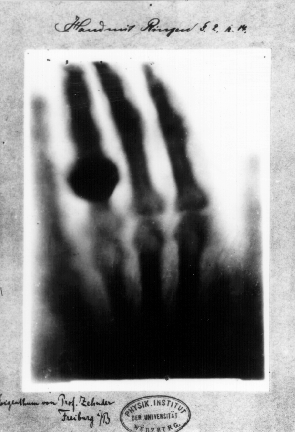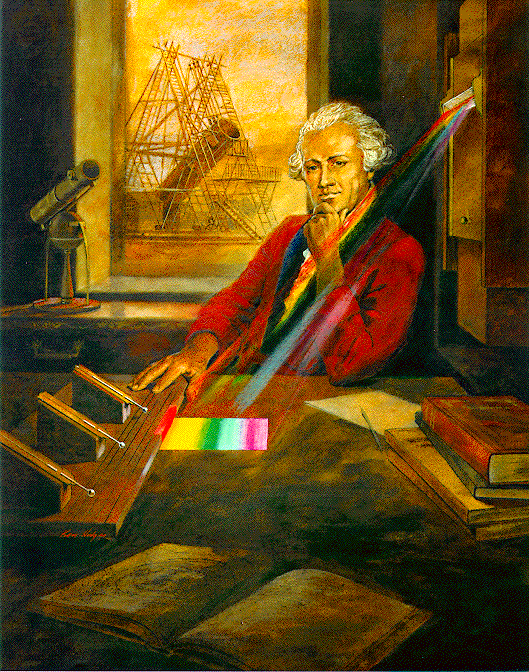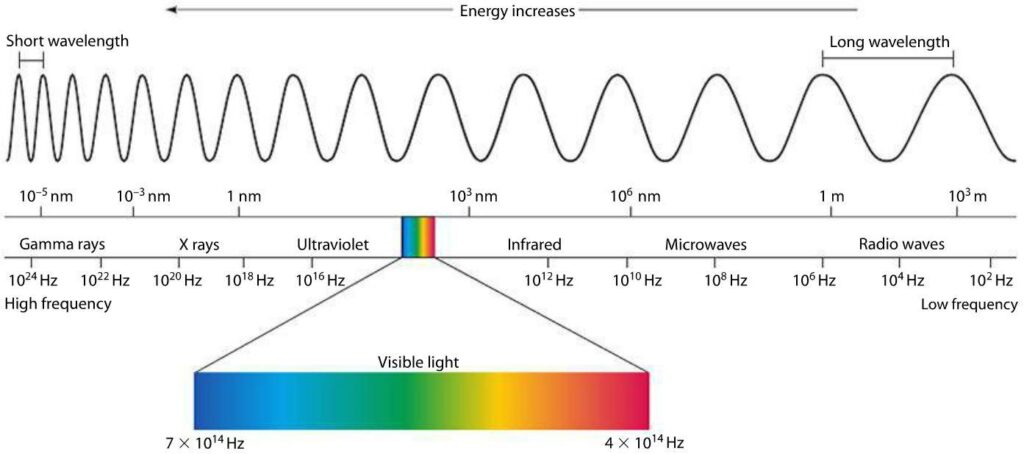The existence of a form of light other than visible light was inconceivable prior to the 19th century. However, in nature there exists a continuum of radiation waves, all traveling at the same speed of light, with a nearly infinite possibility of wavelengths and frequencies. This is the electromagnetic spectrum, and the first new form of light was unexpected discovered in 1800 by the British scientist William Herschel.
The Discovery of Infrared Rays
William Herschel is best know for his discovery of the planet Uranus but his interests also extended beyond the visible universe. Herschel was fascinated by the nature of heat and light and his involvement in this area of study lead to the discovery of a completely new and unexpected form of light.
In 1800 Herschel conducted an experiment where he directed sunlight though a glass prism to create a spectrum of visible light. He then measured the temperature of the different colors of light, where he noticed the temperature increased as he moved from the violet to the red end of the spectrum. Then in a moment of true scientific curiosity, he took his experiment one step further. He decided to measure the temperature just beyond the red light, but where no sunlight was visible. This region showed the highest temperature of all, and this led Herschel to conclude that there must be some form of invisible light present that we cannot see. He named this invisible radiation infrared, from the Latin ‘infra’ meaning “below” – or in this case below the red in the spectrum.
The importance of this discovery can hardly be overstated. It added an entirely new dimension to our perception of the universe and to this day has had significant practical applications in a variety of fields such as astronomy, telecommunications, healthcare, and environmental science. It also suggested that there may be other forms of light yet to be discovered.
A Continuous Spectrum of Electric and Magnetic Fields Oscillating Together
Shortly after Herschel discovery of infrared rays, the German chemist Johann Wilhelm Ritter discovered another of invisible rays. Ritter was obviously inspired by Herschel’s discovery of infrared rays, and he decided to experiment at the opposite end of the spectrum, beyond violet. Ritter conducted his experiment by also focusing sunlight through a glass prism to create a spectrum of colors. He noticed that silver chloride, a chemical known to darken when exposed to sunlight, darkened faster when exposed to the region beyond violet light. He had discovered what would later become known as ultraviolet rays, from the Latin ‘ultra’ meaning “beyond” – in this case beyond violet in the spectrum. The discovery of ultraviolet and infrared rays further prompted the discovery of other types of electromagnetic rays.

In the 1860s the British physicist James Clerk Maxwell revolutionized the world of physics with his electromagnetic theory. He developed four mathematical equations, known as the Maxwell Equations, that described how electric and magnetic fields interact. These equations unified the previously separate fields of electricity and magnetism. His new theory suggested that light was a form of electromagnetic wave, and that it was just a smaller part of a much broader spectrum. This spectrum is known as the electromagnetic spectrum. In 1867, Maxwell predicted that there should be wavelengths of light longer than the infrared rays discovered by Herschel.
It took another two decades, but in 1887 the German physicist Heinrich Hertz confirmed Maxwell’s predictions when he discovered radio waves in his laboratory. Light with wavelengths of a shorter length were soon discovered next. In 1895 Wilhelm Roentgen accidentally discovered what became known as X-rays while experimenting with cathode ray tubes. It took another two decades until scientists were able to determine that these X-rays were indeed another form of light. The last part of the spectrum to be discovered was gamma rays. The French physicist Paul Villard discovered these in 1900 while he was studying radiation emitted by radium.
Far Reaching Technological Impacts
The discovery of the electromagnetic spectrum has had far reaching impacts on 20th century technology and beyond. The development of radio and television technology was predicted on the understanding of radio waves. In similar fashion, the invention of radar during World War II was possible due to the understanding of microwaves.
From science and technology to medicine and daily life, the impacts of the electromagnetic spectrum are almost too vast and numerous to mention. But to name a few – radio and television broadcasting, mobile phones and the internet, X-rays used in healthcare, space telescopes and satellite-based sensors are just a few of the many examples of the areas in which electromagnetic radiation have had an impact on civilization.
Continue reading more about the exciting history of science!

